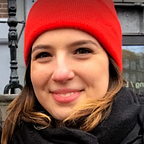Co-Designing a Video Call App for a web-based healthcare application in 6 days
Introduction
In May 2020 I was tasked with improving the user experience of the Video Call App*, a feature from a digital health platform. It lets healthcare practitioners meet patients through video in a data-protected environment, enabling patients to continue with their mental health treatment during the pandemic. The Video Call App company learned that their users found the app difficult to use, leading to the cancellation of their Video Call App subscription at the end of the free trial period.
*Due to confidentiality reasons I can’t provide details publicly, but I’m happy to tell more upon request.
My role in the project:
My role involved improving the usability of the app before the development kick-off in the following week, proposing solutions to make it more accessible for users, thus increasing the number of app subscriptions.
My job included completing the following tasks:
- Identifying users’ pain points
- Co-designing solutions for the users’ problems
- Creating a unified vision of the Video Call App experience
- Presenting solutions to stakeholders for approval
Planning
User research wasn’t readily available, and we had six days to deliver the solution. Interviewing users required about 2-week planning, and meeting in person wasn’t possible because of the corona.
To overcome the obstacles I took the following steps:
- Secondary research: I reviewed the most recent customer insights and mapped the users’ navigation in the Video Call App.
- Participatory design: I planned and facilitated remote co-design sessions with the teams involved in the project and in client-facing roles, using Google Meets and Miro.
- Use of Design Sprint principles: The co-design sessions happened in 4 days; on the 5th day a solution proposal was presented to stakeholders.
- Documentation: To keep stakeholders engaged, the outcomes and insights of each workshop session were recorded on a shared file. The document also presented the estimated time vs the actual time taken to complete each deliverable.
Key Findings
Proto-personas
Based on the customer insight and discovery workshop, we set up proto-personas — Hanneke and Monica — that represented the primary users of the Video Call App. They embodied issues users face when using the application and the app contextual use.
Hanneke embodies practitioners working during covid-19; professionals who are working remotely for the first time, adjusting to the sudden change of seeing patients through video instead of in person. They have busy agendas, usually with back-to-back appointments.
Monica represents people, from many walks of life, following treatment for mental health concerns. They too are adjusting to do sessions through video, and some of them are learning how to navigate video conference tools for the first time.
Central Usability Issues
The only way to attend a video call is by the email received at the time of the appointment: users struggle to understand this path because they are used to receiving meeting instructions ahead of time.
Users don’t understand the meeting directions: The email notification informed the user was invited for a video call, but it didn’t state the time, date, or any other relevant information.
Internet Explorer is the users’ default browser, and the application operates well in Chrome, Edge, or Opera. However, most users can’t open the meeting link outside their standard browser. This led users to join calls in Internet Explorer, where the video call quality was too low.
Proposed Solutions
How might we help people learn how and when and how to join meetings in the Video Call App?
1. Meeting information email redesign
To help users know when and how to join their video appointment, we adjusted the meeting instructions:
- The original first paragraph shifted to a one-line telling the name of the meeting host.
- The meeting's time and date are in the message and are easy to find.
- Meeting hyperlink available to copy & paste.
- Browser recommendations and other tips for a good video call offered in everyday language and illustrated with icons.
2. User flow expansion
The original application offered only a single entry point, so we expanded the user flow by:
- Including entries from the different stages of the users’ journey, considering steps that users take offline and outside the application.
- Adding loading, empty, and error states, creating clear navigation routes towards the successful state.
Presenting Recommendations to Stakeholders
At the end of our 6-day deadline, I presented the data and insights collected during the workshops and the recommendations designed from those findings.
The presentation was given during the first section of the recurring development Demo session, which all stakeholders attended regularly. Topics covered in 30 min:
- Definition of the problem we were trying to solve
- Summary of business goals
- The strategy behind the co-design sessions
- Insights and recommendations
- Time for questions, concerns & feedback
Outcomes
- The user flows were adopted by the product owner and project manager for prioritizing features and writing comprehensive user stories.
- The wireframes were the starting point for development, and the product was launched on time.
- The strategic importance of user research became clearer and influenced the decision of expanding the headcount for UX hiring.
